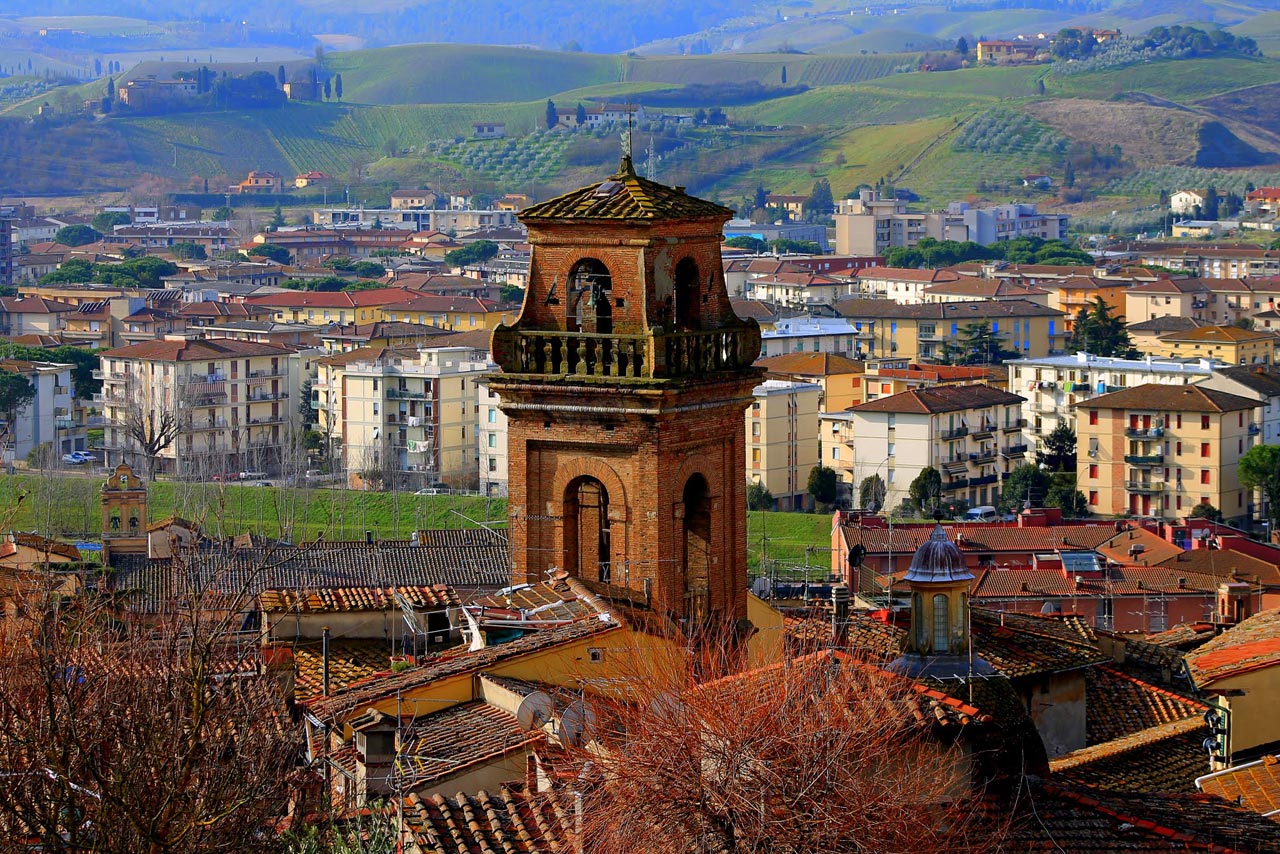


Since 1149 the name of Castelfiorentino was given to the Castelvecchio built on the Via Francigena in the place of a settlement of Roman origin: Timignano. The fortified castle enclosed, on the hill, the parish church of S. Ippolito (the ancient S. Biagio) and with a second circle of walls, Borgo d'Elsa and Borgo Nuovo.

There were five gates (Porta Fiorentina, Porta Pisana, Porta al Vento, Porta Senese and Porta di Borgo), and only two streets crossed on the only square (now Piazza del Popolo).

Feud of the Cadolingi and then of the Counts Alberti, gradually acquired by the Bishop of Florence in the 12th century, it suffered the vicissitudes of the conflicts between the Church and the Empire, Guelphs and Ghibellines and between Siena and Florence itself (of which it was an important outpost, and therefore obtained the seat of the podestà, the privilege of the red lily on the white banner and the official integration of the name Castelfiorentino).

Here in 1260, after the battle of Montaperti, peace was signed between the two rival cities. But it was still the scene, over the centuries, of battles and military raids, until, in 1521, it suffered a severe siege and was devastated by the imperial troops. It was then reconquered by Francesco Ferrucci. With the plague and the death of Ferrucci, Florence had to surrender to the troops of Charles V and accept the return of the Medici and with it also Castelfiorentino.

The Valdelsa remained in a state of profound desolation due to the war events, so much so that the government of Florence relieved those populations from all expenses. To save money, the two podesterie of Castelfiorentino and Barbialla (now part of Montaione) were also merged.

When its strategic importance diminished, even the administrative one was limited, due to its dependence on the vicariate of Certaldo. But in the eighteenth century, with the Grand Duchy of Lorraine, it progressed again and was the Chancellery and Podestery, with a civic guard and wide jurisdiction over Certaldo and Montaione as well.

It accepted the annexation to the Kingdom of Italy and became the district capital in 1868.

It was one of the first Italian municipalities to give itself in 1902 an administration led by the Italian Socialist Party.
Castelfiorentino
Address: Piazza del Popolo, 1, 50051
Phone: +3905716861
Site:
http://www.comune.castelfiorentino.fi.it/Location inserted by
BBCC